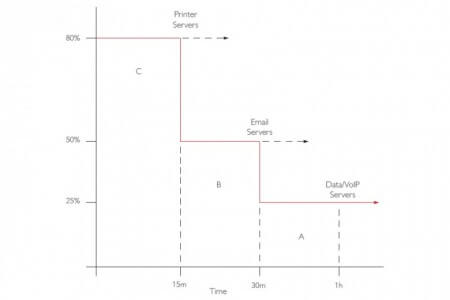Load shedding: the best way to manage your UPS downtime
Load shedding is the process whereby, the load on a UPS is reduced by sequentially powering down specific hardware when the UPS is running on battery power.
This deliberate shutdown on electric power in parts, will prevent a failure of the entire system when the demand tensions the capability of the UPS system. This reduces the load on the UPS system and increases the runtime for the remaining loads.
The diagram displays how the network should be prioritised into A,B and C order in which ‘A’ type loads must be kept running for the longest time and ‘C’ type loads the shortest time.
Priority shutdown
The priority shutdown can be achieved in three ways:
- Programme output sockets available on some UPS systems
- Intelligent power distribution units
- UPS system monitoring and control shutdown software – with each server configured to run for different time periods before shut down.
Load shedding is most common practise of managing potential UPS downtime where there are multiple servers or server clusters to protect.
Would you like to know more?
Are you looking for help with this practical UPS solution? Please get in touch with a member of our fully trained and expert team who can discuss how load shedding can be managed in your business effectively and efficiently.


